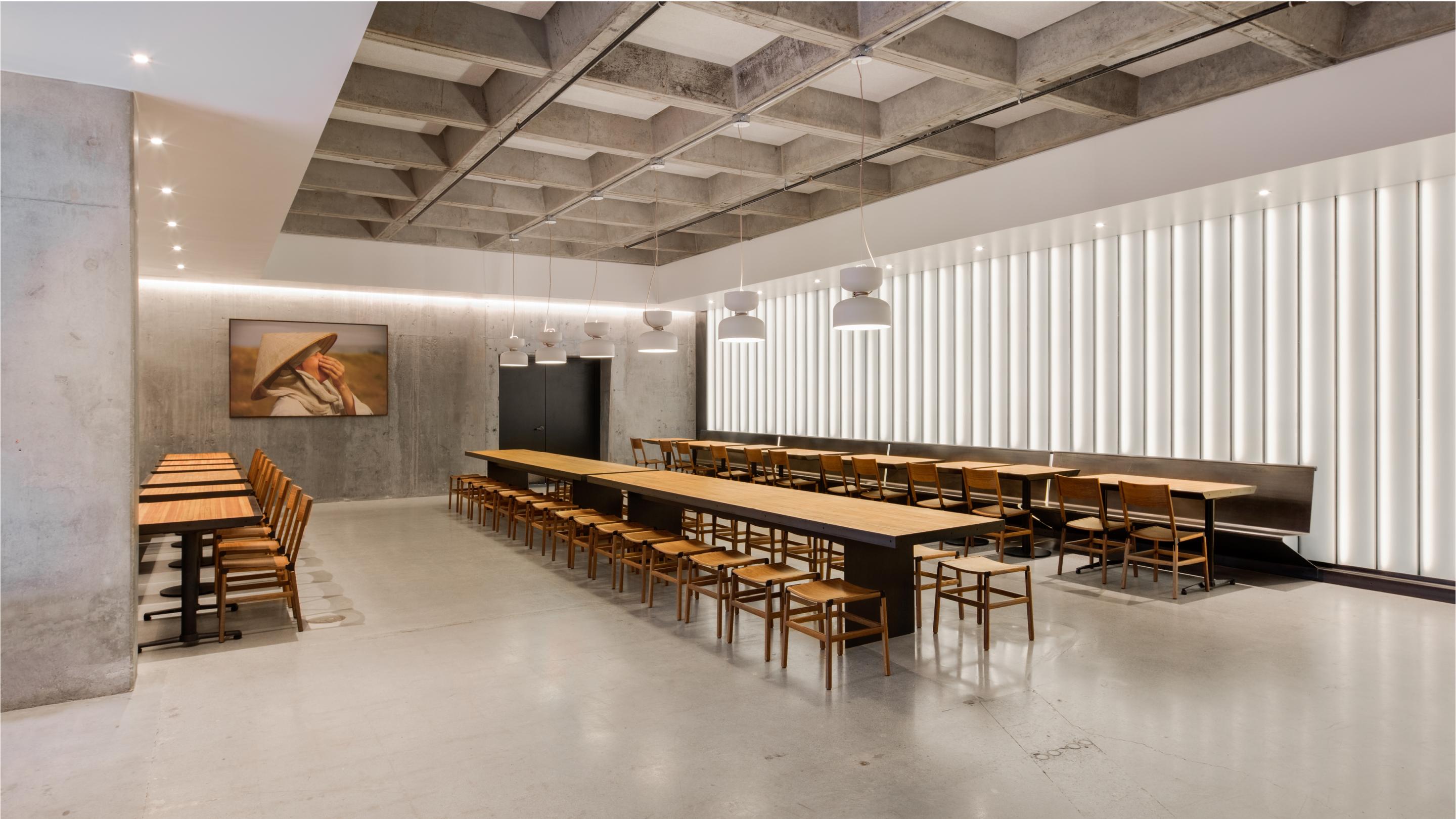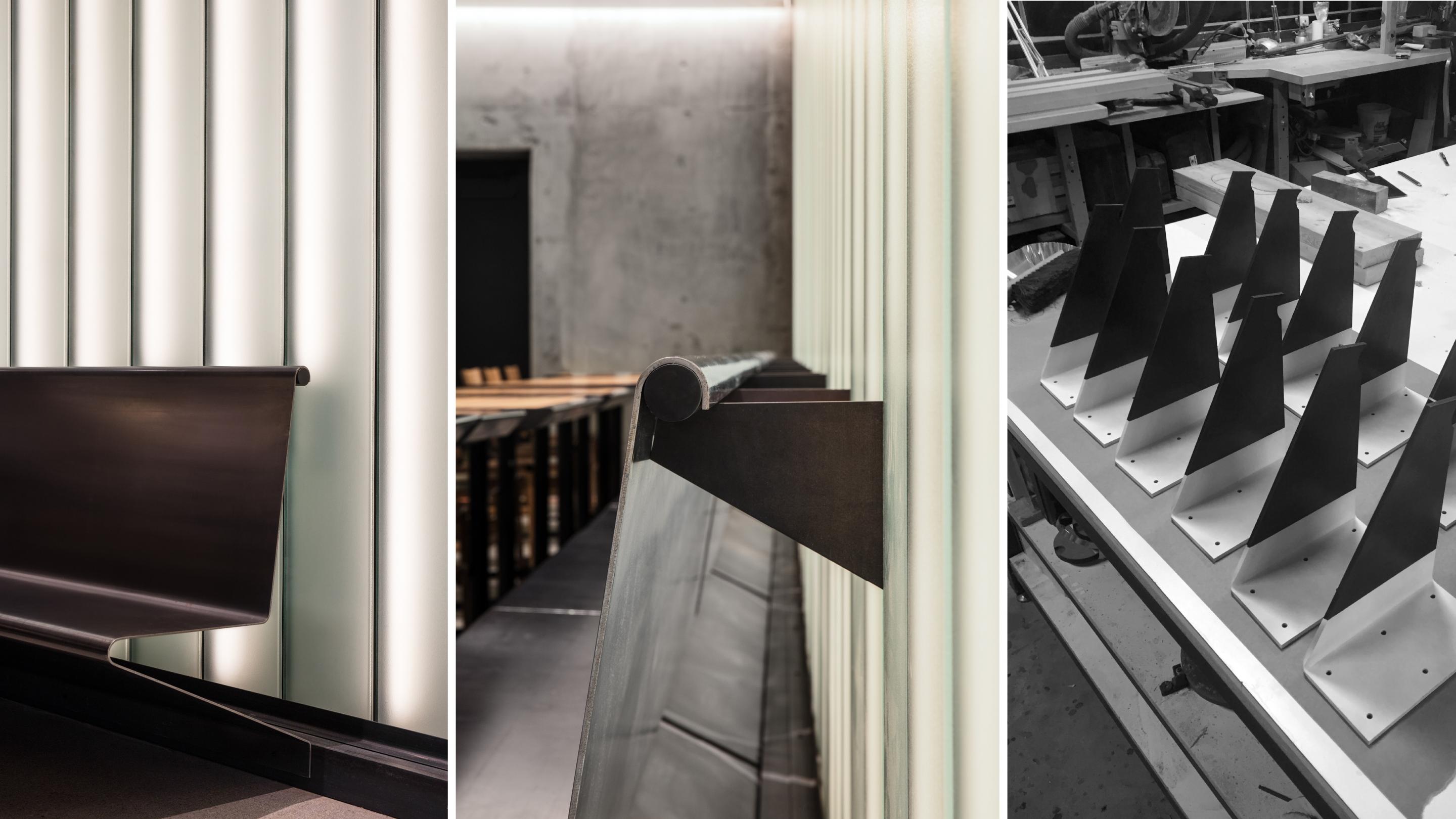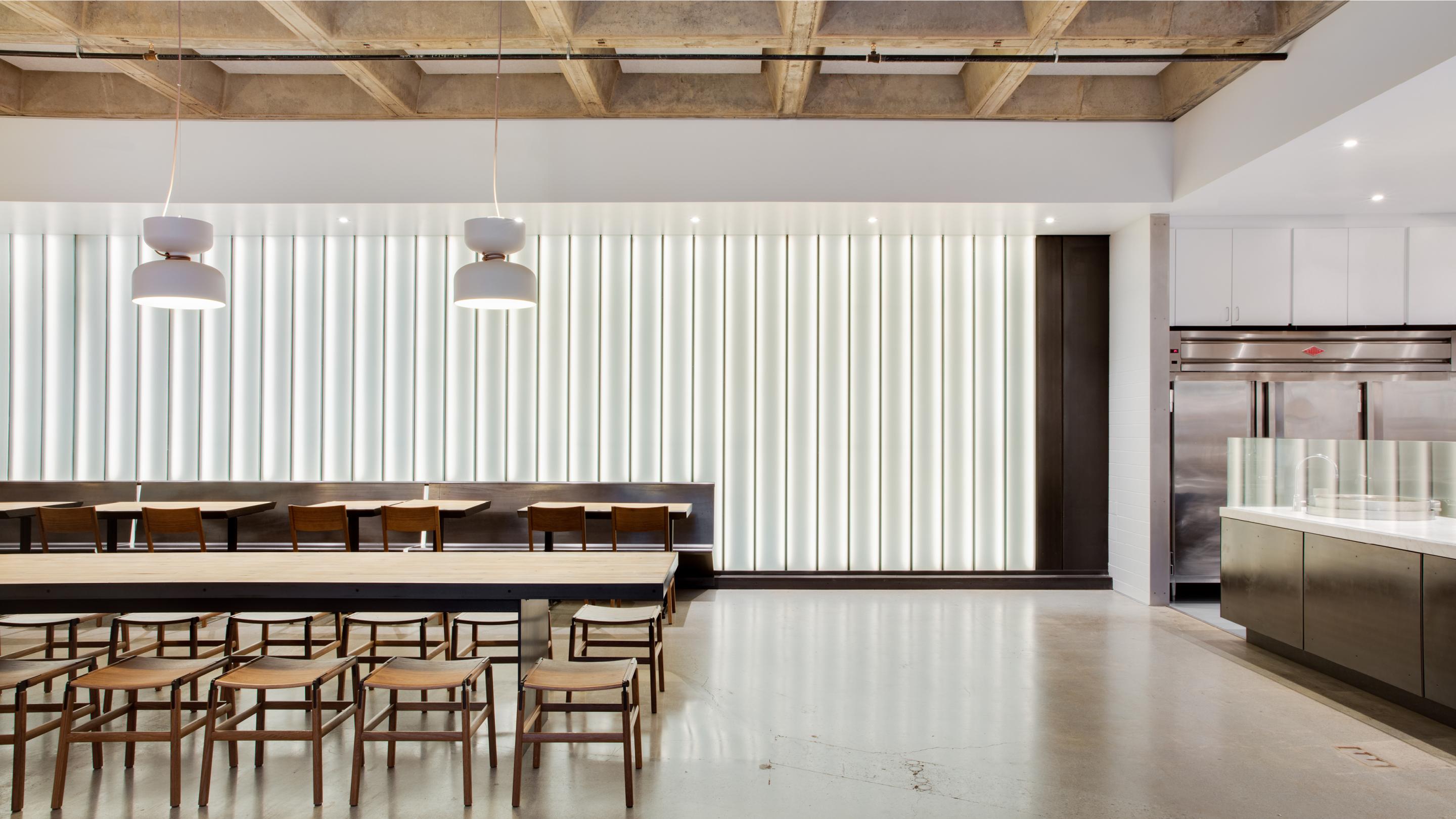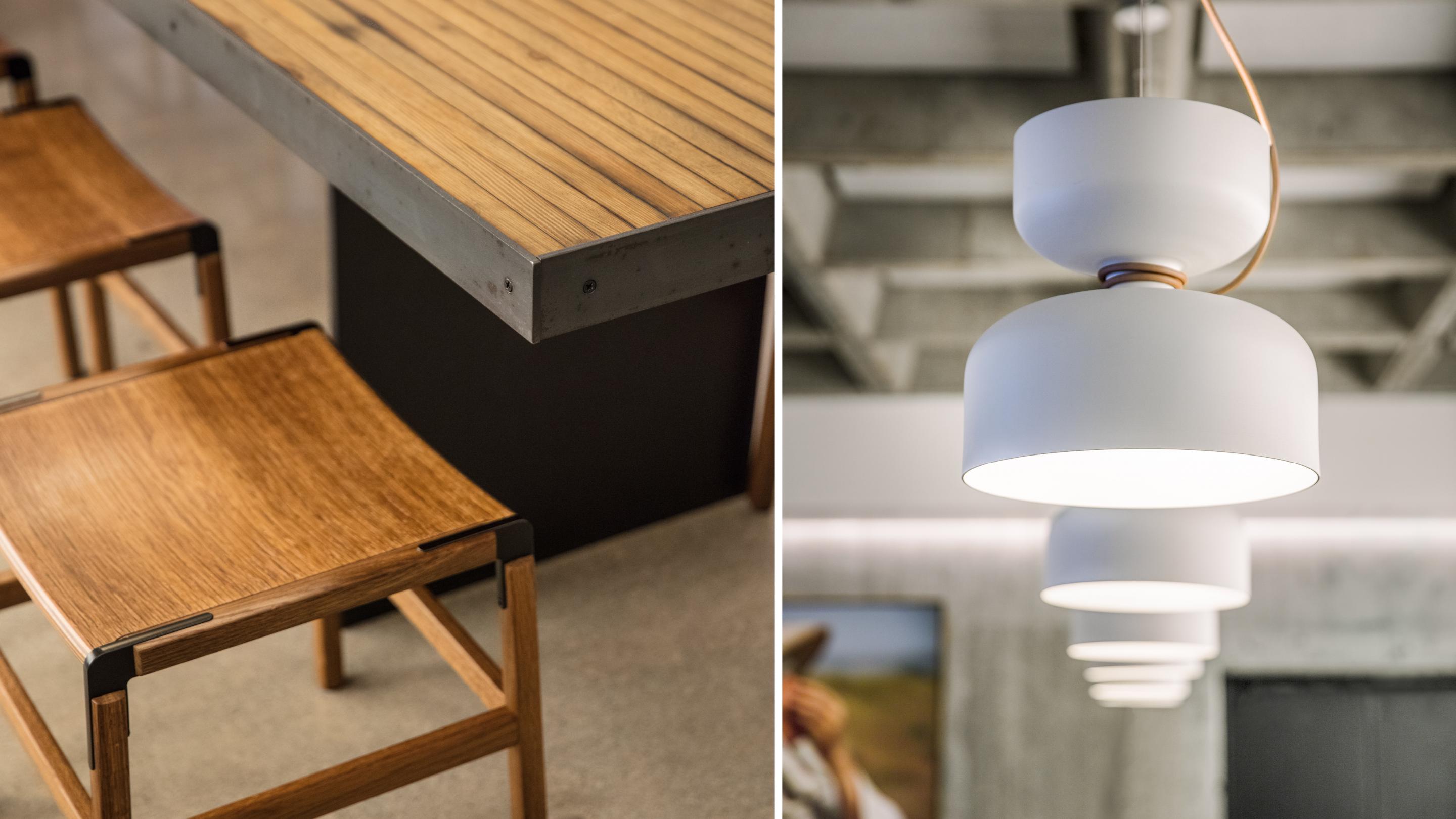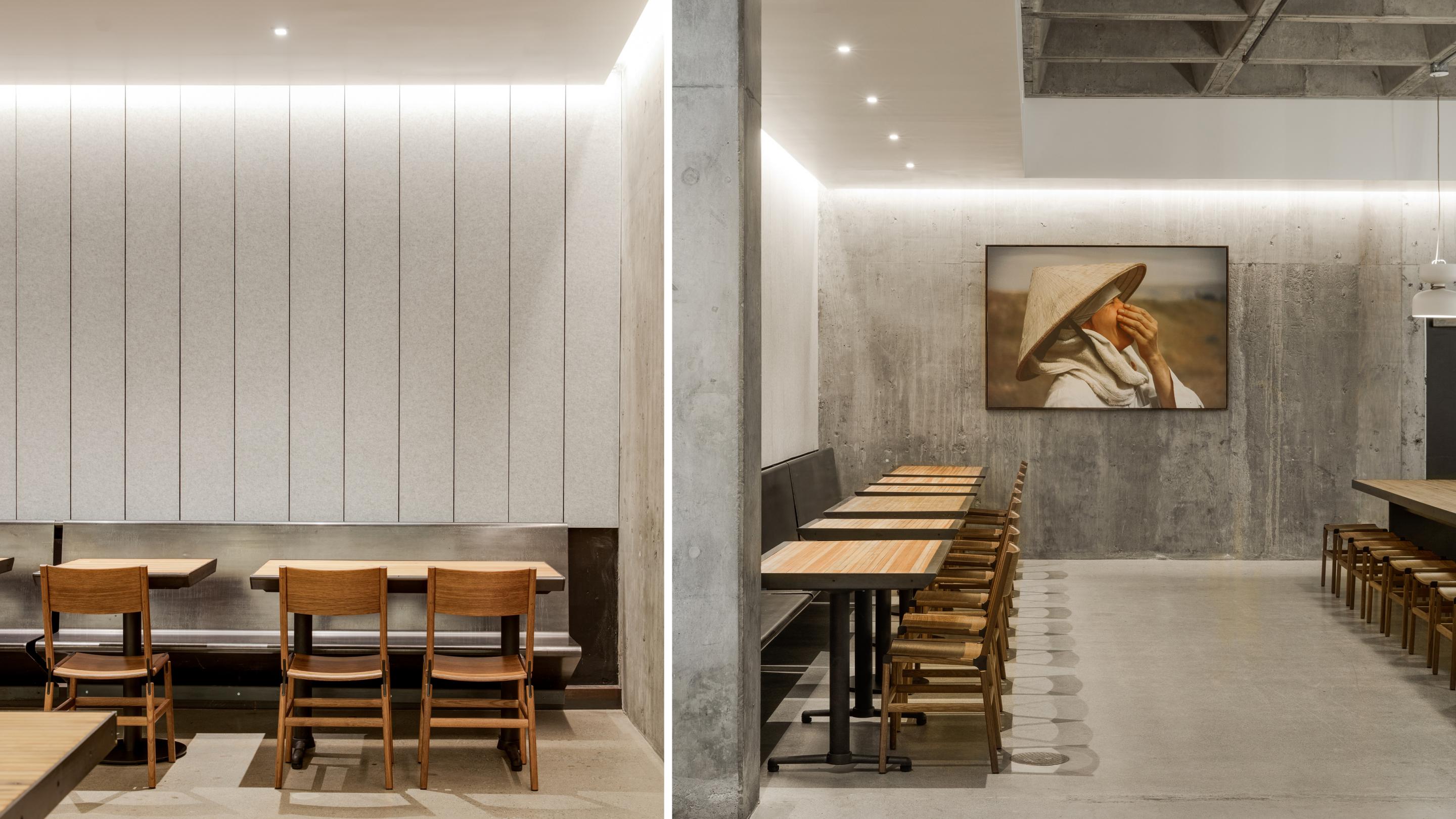Rice and Bones is a fast-casual Vietnamese restaurant located on the ground floor of Wurster Hall, home of the UC Berkeley College of Environmental Design. The university invited our longtime friend and client chef, Charles Phan, to return to this iconic building where he spent many days as an architecture student, to create a budget-friendly version of his well-loved Slanted Door cuisine. Charles’ concept for the restaurant is embodied in its unusual name: Rice is a simple nourishing staple of many Asian cultures, and Bones, an often-overlooked part of the animal, is what gives flavor to a dish such as soup stock and represents a frugal, less wasteful approach to cooking. Inspired by Charles’ celebration of such primary elements, we focused on highlighting Wurster Hall’s dominant raw building material, concrete, while reusing and recycling materials such as glass and wood in the dining room.
We started by stripping the concrete walls and floor of layers of paint and other materials which had concealed it, then added materials sparingly to lend light and add sound absorption to the space. The longest wall of the café was constructed of reclaimed channel glass previously used to clad a parking garage near our office in the Dogpatch. This wall creates what is essentially one large lighting fixture, with dimmable warm LED lights highlighting the vertical glass panels to bring ample light into an otherwise dark space. We restored the original precast concrete coffers of the dining room ceiling, adding felt panels composed of recycled post-consumer content within the coffers and on the adjoining wall to provide acoustic absorption. The dining tables are composed of wood reused from an old bowling alley floor.
The open kitchen creates a theatrical stage for the activity of the chefs. Flanked on either side with white tile walls, the center island of blackened steel and white marble functions as the focal point of the space and a delineation between the raw quality of the dining room and the white box of the kitchen.


